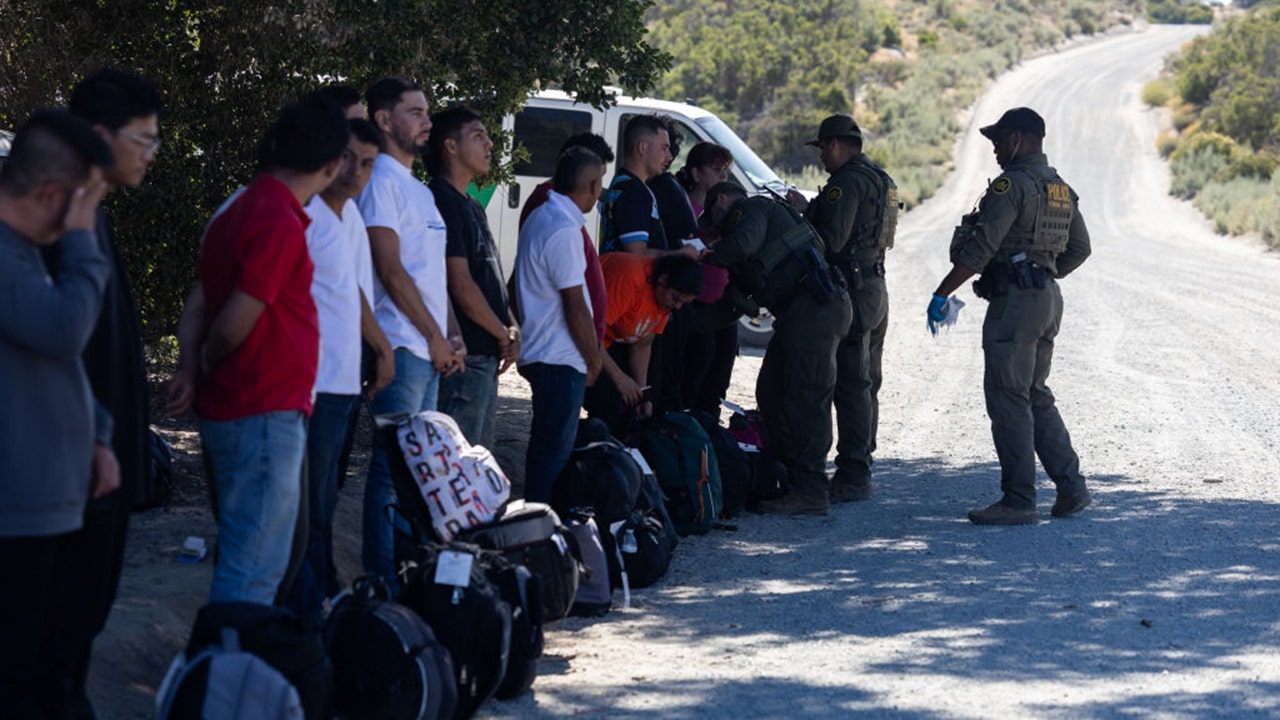California
HopSkipDrive beats new California ridesharing emissions targets | TechCrunch

Youth rideshare startup HopSkipDrive beat two key new California emissions standards in 2023, an accomplishment the company believes will bolster its case for relying more on shared passenger vehicles to get kids and teens to and from school.
The company tells TechCrunch that electric vehicles drove 8% of all miles the platform in the state last year, 400% more than the 2% target set by California’s Air Resources Board (CARB). Total emissions for the year in California were 240 grams of carbon dioxide per passenger mile, comfortably under the 252 grams-per-mile benchmark.
It’s a feather in the cap but also an added selling point for the decade-old company, which has had to remake itself a few times over the years as it faces increased competition — including from Uber — and new challenges, like a recent data breach.
One of those evolutions came during the pandemic. That’s when CEO Joanna McFarland says her team pushed to build its own strategic route planning software for schools using machine learning, creating a new business line adjacent to the rideshare offering.
The goal was to help make school transportation networks more efficient and also alleviate driver shortage concerns. While drivers must have five years of child care experience, they don’t need the commercial license required to operate a school bus.
“We can be more than just a care-centered transportation marketplace,” McFarland remembers thinking. “We can really solve these school transportation challenges and help lead school transportation into a newer, cleaner era.”
The targets HopSkipDrive cleared were established as part of CARB’s Clean Miles Standard and Incentive Program, which was passed in 2018 in an effort to clean up the fleets of so-called Transportation Network Companies (TNCs) like Uber and Lyft. That regulation went into effect in 2023, and TNCs like HopSkipDrive are required to submit their results later this year.
HopSkipDrive beat the targets for two reasons, McFarland says. First, California already has a fairly high rate of electric vehicle adoption, thanks to a mix of regulatory policy and economic incentives. In fact, HopSkipDrive says 36% of all vehicles that completed a ride in California last year were electric, hybrid, or fuel cell.
The second is the route planning software. “That dramatically reduces the number of miles driven and the amount of emissions,” she said, because “many school districts have very inefficient routes.”
“Anytime you have less than 12 kids on a school bus, a better option is actually to put those kids into sedans, and that reduces the emissions, that reduces mileage, and makes the entire operation more efficient,” she said.
That may seem counterintuitive at a time when the Biden administration is lining up a billion dollars in federal funding for schools to adopt electric buses. But in some cases, those buses won’t be ready immediately. And while a billion dollars is a lot of money, it won’t buy clean school buses for every district in the country.
Besides, McFarland says, “how our kids are getting to school has changed dramatically over the last 30 years.” Urban planning fans may cringe at the thought of slow-moving multi-lane dropoff and pickup lines, but funding for electric buses isn’t going to inspire those schools — or parents — to immediately change their ways, she says.
“It’s a great thing that is happening. It’s going to take a little bit longer than I think some of the excitement that is surrounding it,” she says. “I think what we offer is a real way to accelerate that, and accelerate districts meeting some of their goals that they won’t be able to without services like ours.”
McFarland says the flexibility of passenger vehicles is helpful for students who are experiencing homelessness, or in foster care, or going through any other situation where they have to move around a lot. She says kids are also more open to carpooling, a feature that has struggled to catch on with the big rideshare services like Uber and Lyft.
“These increased individualized needs are really wreaking havoc on a fixed route school bus model,” she says. “We can really solve the school transportation crisis in this country and do it in a way that makes far more sense is better for our families, it’s better for our communities, and it’s better for our schools.”

California
California firefighters battle wind-driven wildfire east of San Francisco

SAN FRANCISCO — California firefighters aided by aircraft battled a wind-driven wildfire burning Saturday in an area straddling the San Francisco Bay Area and central California, authorities said.
Gusty winds have fueled the Corral Fire burning near the city of Tracy, 60 miles (96 kilometers) east of San Francisco, and the Lawrence Livermore National Laboratory in the city of Livermore, according to the California Department of Forestry and Fire Protection, or Cal Fire.
The blaze grew to 7 square miles (18 square kilometers) within hours, sending dark plumes of smoke high into the sky. It was 40% contained, Cal Fire said.
Interstate 580, which connects the San Francisco Bay Area to San Joaquin County in central California, was closed in both directions from Corral Hollow Road to Interstate 5 due to the lack of visibility from the smoke, the California Department of Transportation said in a statement.
The San Joaquin County Office of Emergency Services issued an evacuation order, pinpointing the wildfire in an area east of Interstate 580. Residents between Corral Hollow Road and Tracy Boulevard were ordered to leave their homes, with residents south of Tracy Boulevard told to be prepared for evacuation.
California
Oregon and California announce Doodle for Google finalists – KOBI-TV NBC5 / KOTI-TV NBC2

Skip to content
California
First responders, veterans hail benefits of psychedelic drugs as California debates legalization • Oregon Capital Chronicle

Wade Trammell recalls the time he and his fellow firefighters responded to a highway crash in which a beer truck rammed into a pole, propelling the truck’s engine through the cab and into the driver’s abdomen.
“The guy was up there screaming and squirming. Then the cab caught on fire,” Trammell says. “I couldn’t move him. He burned to death right there in my arms.”
Memories of that gruesome death and other traumatic incidents he had witnessed as a firefighter in Mountain View, California, didn’t seem to bother Trammell for the first seven years after he retired in 2015. But then he started crying a lot, drinking heavily and losing sleep. At first, he didn’t understand why, but he would later come to suspect that he was suffering from post-traumatic stress disorder.
After therapy failed to improve his mental well-being, he heard about the potential benefits of psychedelic drugs to help first responders with PTSD.
Last July, Trammell went on a retreat in Puerto Vallarta, Mexico, organized by The S.I.R.E.N. Project, a nonprofit that advocates the use of psychedelics and other alternative medicines to help first responders. He took psilocybin mushrooms and, the next day, another psychedelic derived from the toxic secretions of the Sonoran Desert toad. The experience, he says, produced an existential shift in the way he thinks of the terrible things he saw as a firefighter.
“All that trauma and all that crap I saw and dealt with, it’s all very temporary and everything goes back into the universe as energy,” Trammell says.
Abundant research has shown that psychedelics have the potential to produce lasting relief from depression, anxiety, PTSD, addiction, and other mental health conditions. Many universities around the United States have programs researching psychedelics. But experts warn that these powerful drugs are not for everybody, especially those with a history of psychosis or cardiovascular problems.
Most psychedelic drugs are prohibited under federal law, but California may soon join a growing number of local and state governments allowing their use.
Senate Bill 1012, which is working its way through the California Legislature, would allow the therapeutic use of psilocybin; mescaline; MDMA, the active ingredient in ecstasy; and dimethyltryptamine, the active ingredient in ayahuasca, a plant-based psychoactive tea. The drugs could be purchased and ingested in approved locations under the supervision of facilitators, who would undergo training and be licensed by a new state board. The facilitators would need a professional health credential to qualify.
The bill, co-sponsored by Sen. Scott Wiener, D-San Francisco, Assembly member Marie Waldron, R-San Diego, and several other lawmakers, follows last year’s unsuccessful effort to decriminalize certain psychedelics for personal use. Gov. Gavin Newsom, a Democrat, vetoed that bill, though he extolled psychedelics as “an exciting frontier” and asked for new legislation with “regulated treatment guidelines.”
Wiener says the new bill was drafted with Newsom’s request in mind. It is supported by some veterans and first responder groups and opposed by numerous law enforcement agencies.
One potential roadblock is the state’s budget deficit, which is pegged at between $38 billion and $73 billion. Newsom and legislative leaders may choose not to launch a new initiative when they are cutting existing programs. “That is something we’ll certainly grapple with,” Wiener says.
The legislation, which is making its way through committees, would require the new board to begin accepting facilitator license applications in April 2026. The system would look somewhat like the one in Oregon, which allows the use of psilocybin mushrooms under the guidance of state-licensed facilitators at psilocybin service centers. And like Oregon, California would not allow for the personal use or possession of psychedelics; the drugs would have to be purchased and consumed at the authorized locations.
Colorado, following the passage of a ballot initiative in 2022, is creating a system of regulated “healing centers,” where people will be able to legally consume psilocybin mushrooms and some other psychedelics under the supervision of licensed facilitators. Colorado’s law allows for the personal use and possession of a handful of psychedelics.
In California, the cities of Oakland, San Francisco, Berkeley, Santa Cruz, and Arcata have effectively decriminalized many psychedelics, as have other cities around the United States, including Ann Arbor, Michigan; Cambridge, Massachusetts; Detroit; Minneapolis; Seattle; and Washington, D.C.
Psychedelics such as psilocybin, ayahuasca, and peyote have been used for thousands of years by Indigenous populations in Latin America and the current-day United States. And some non-Indigenous groups use these substances in a spiritual way.
The Church of Ambrosia, with locations in San Francisco and Oakland, considers psilocybin mushrooms, also known as magic mushrooms, a sacrament. “Mushrooms affect the border between this world and the next, and allow people to connect to their soul,” says Dave Hodges, founder and pastor of the church.
Hodges was behind an unsuccessful attempt to get an initiative on the California ballot this year that would have decriminalized the possession and use of mushrooms. He hopes it will qualify for the 2026 ballot.
The pending California legislation is rooted in studies showing psychedelics can be powerful agents in mental health treatment.
Charles Grob, a psychiatry professor at the University of California-Los Angeles School of Medicine who has researched psychedelics for nearly 40 years, led a study that found synthetic psilocybin could help reduce end-of-life anxiety in patients with advanced-stage cancer.
Grob says that MDMA is good for couples counseling because it facilitates communication and puts people in touch with their feelings. And he conducted research in Brazil that showed ayahuasca used in a religious context helped people overcome alcoholism.
But Grob warns that the unsupervised use of psychedelics can be dangerous and says people should undergo mental and medical health screenings before ingesting them. “There are cases of people going off the rails. It’s a small minority, but it can happen and when it does happen it can be very frightening,” Grob says.
Ken Finn, past president of the American Board of Pain Medicine, says psychedelics have a number of side effects, including elevated blood pressure, high heart rate, and vomiting, and that they can trigger “persistent psychosis” in a small minority of users. Legal drugs also pose risks, he says, “but we have much better guardrails on things like prescriptions and over-the-counter medications.” He also worries about product contamination and says manufacturers would need to be tightly regulated.
Another potential problem is health equity. Since insurance would not cover these sessions, at least initially, they would likely attract people with disposable income. A supervised psilocybin journey in Oregon, for example, can cost more than $2,500.
Many people who have experienced psychedelics corroborate the research results. Ben Kramer, a former Marine who served in Afghanistan and now works as a psilocybin facilitator in Beaverton, Oregon, says a high-dose mushroom session altered his worldview.
“I relived the first time I was ever shot at in Afghanistan,” he says. “I was there. I had this overwhelming love and compassion for the guy who was shooting at me, who was fighting for what he believed in, just like I was.”
Another characteristic of psychedelic therapy is that just a few sessions can potentially produce lasting results.
Trammell, the retired firefighter, hasn’t taken psychedelics since that retreat in Mexico 10 months ago. “I just felt like I kind of got what I needed,” he says. “I’ve been fine ever since.”
KFF Health News is a national newsroom that produces in-depth journalism about health issues and is one of the core operating programs at KFF—an independent source of health policy research, polling, and journalism. Learn more about KFF.
-

 News1 week ago
News1 week agoRead the I.C.J. Ruling on Israel’s Rafah Offensive
-

 News1 week ago
News1 week agoVideo: Protesters Take Over U.C.L.A. Building
-

 World1 week ago
World1 week agoHoping to pave pathway to peace, Norway to recognise Palestinian statehood
-

 News1 week ago
News1 week agoLegendary U.S. World War II submarine located 3,000 feet underwater off the Philippines
-

 Politics1 week ago
Politics1 week agoAOC demands Senate Democrats investigate reports of Jan. 6 flags flown at Supreme Court Justice Alito's home
-

 World1 week ago
World1 week agoFamilies of Uvalde school shooting victims sue Microsoft, Meta and gunmaker
-

 Politics1 week ago
Politics1 week agoDefense Secretary Lloyd Austin to undergo nonsurgical procedure, Deputy Kathleen Hicks will assume control
-

 Politics1 week ago
Politics1 week agoHunter Biden attends pre-trial hearing in Delaware court on federal gun charges


















